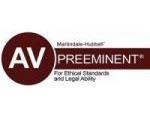Talcum Powder is a popular household item used by many Americans. The powder has been around since the 1800’s and has been used to absorb perspiration typically on children and women. Over the past two decades there have been reports of Talcum Powder linked to ovarian cancer as well as lung cancer. What is talcum powder? How do we determine which products are safe to use in our homes? Is it true that Talcum Powder is linked to cancer? At Brooks Law Group we value our clients’ health and safety, so we have set out to explore this unusual topic and provide information regarding Talcum Powder, the details, and the lawsuits.
Talcum Powder is a mineral derived product commonly used on children to prevent rashes but also found in many beauty products. The main ingredient is Talc; which is a mixture of finely ground stone mined from all over the world, especially India. There is plenty of room for error during the harvest of this mineral since the mining lands could be contaminated with other substances often found in the ground. Talc has been reviewed and researched since the 1930’s drawing various results about its safety. Talc is magnesium silicate which in the raw (unprocessed) state carries asbestos. Some common beauty products that contain talc are Shower to Shower, baby powder products, eye-shadow, lipsticks, foundations, lotions, hygiene products and the like. It is difficult to determine if each product carries contaminated talc since many beauty manufacturers do not list ingredients on their labels but with some extra research it can be done. Talc is used in these products to create a matte finish, absorb oils, and assist in texturizing.
On September 28th, 2009 the FDA began a safety review trial on products containing Talc. The FDA requested samples from 9 talc suppliers (specializing in beauty products) to perform their testing at an external laboratory in Maryland. A total of 4 companies complied with the request: Rio Tinto Minerals, Presperse, Sensient Cosmetic Technology, and Brenntag Specialties Inc. The FDA received 34 different products containing Talc which were tested three times each using two methods; the PLM (Polarized Light Microscopy) and the TEM (Transmission Electron Microscopy) methods. The testing ended on September 27th, 2010 with results stating that none of the 34 beauty products carried asbestos carcinogens. The FDA states on their website, “The results were limited, however, by the fact that only four talc suppliers submitted samples and by the number of products tested. For these reasons, while FDA finds these results informative, they do not prove that most or all talc or talc-containing cosmetic products currently marketed in the United States are likely to be free of asbestos contamination.” Thus, admitting that the test was small and generally not adequate to conclude complete safety of talc products.
The first lawsuit won against Johnson & Johnson for their baby powder (talcum powder) was filed by plaintiff, Deane Berg, who was diagnosed in 2006 with ovarian cancer after talcum powder dusting for 30 years. The plaintiff filed suit against Johnson & Johnson as well as Rio Tinto Minerals; she won in federal court in 2013. The American Cancer Society has published several blogs in regard to Ovarian Cancer; what scientists have learned over the years is that when talcum powder is administered for personal hygiene purposes it is absorbed by the flesh where it travels through the blood stream from the point of contact to the Fallopian tubes and to the ovaries. There are other products that women specifically use for hygiene that can contain contaminated talc such as tampons, condoms, and diaphragms. Talc is also being linked to lung cancer in miners, who mine the raw mineral and breathe in the contaminated substances. A branch of the WHO (World Health Organization), called IARC (International Agency for Research on Cancer) has deemed Talc as “carcinogenic to humans.” The National Toxicology Program along with the CDC (Center for Disease Control) have yet to thoroughly test Talc on a National level.
Some common signs of ovarian cancer are pelvic pain as well as urinary problems-granted those symptoms are usually related to various issues it is important to be aware of what you are using on your body. Ovarian cancer is quiet and is not regularly tested during women’s health exams so be mindful to request such testing, especially if you have used Talcum powder frequently. Johnson & Johnson has increasing independent lawsuits; among a few class action lawsuits around the nation. The company was clearly negligent of warning consumers on labels along with numerous legal violations regarding consumer rights. The health complications from using talcum powder are not only painful but dangerous and they should be held accountable for practicing unsafe ethics. Every consumer has the right to be made aware of what they are purchasing and how it could potentially affect them even in the long run. If you have any questions regarding Talcum powder, please do not hesitate to call Brooks Law Group at 1-888-We-Mean-It (888-936-3264). We are here to enforce and protect your rights.













